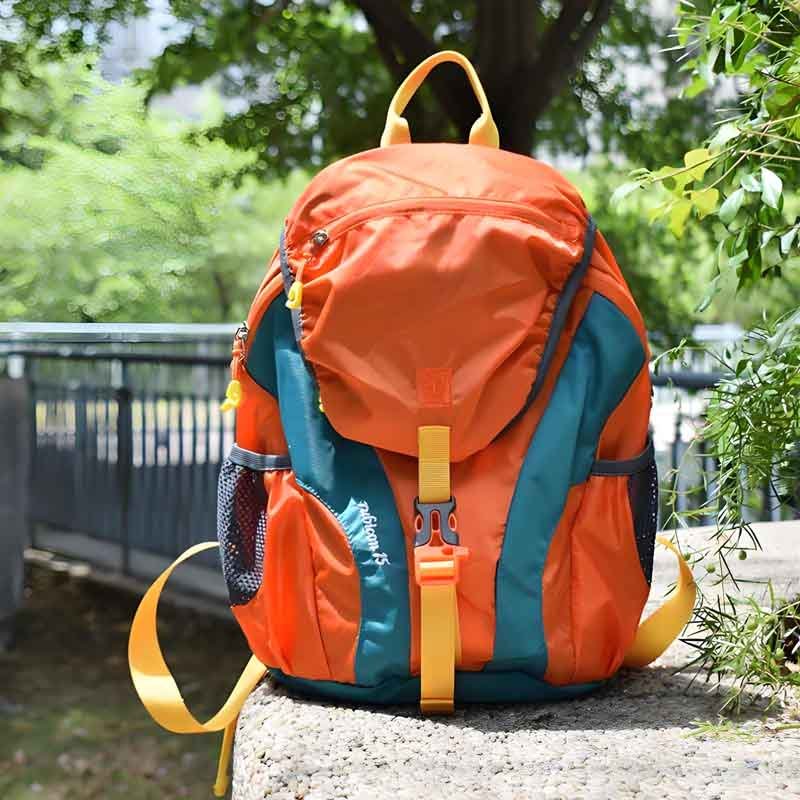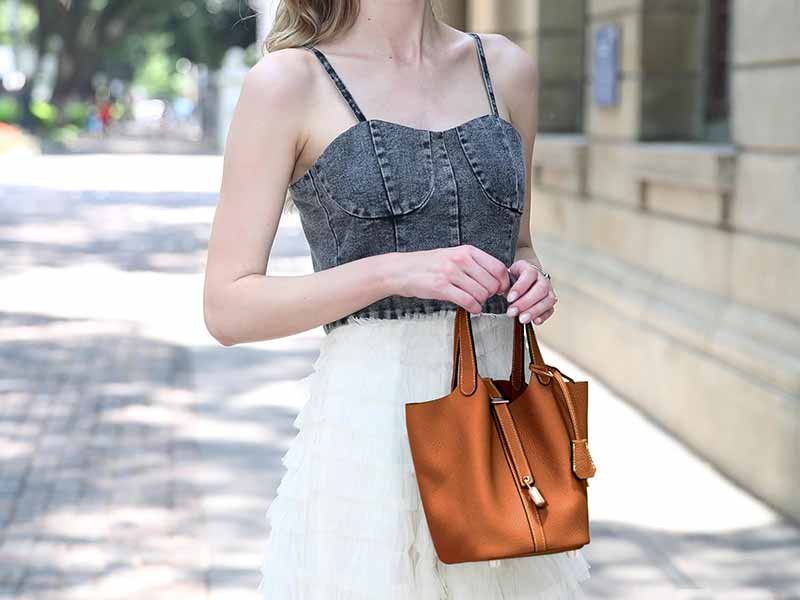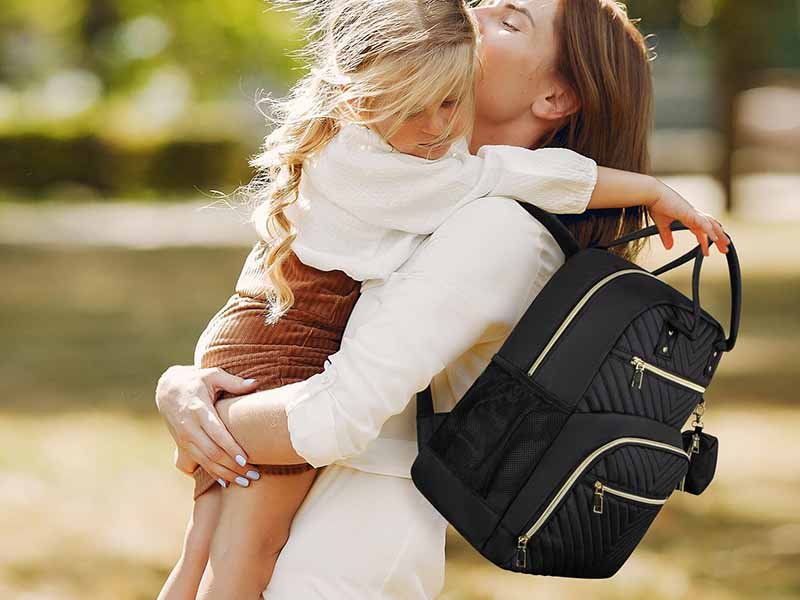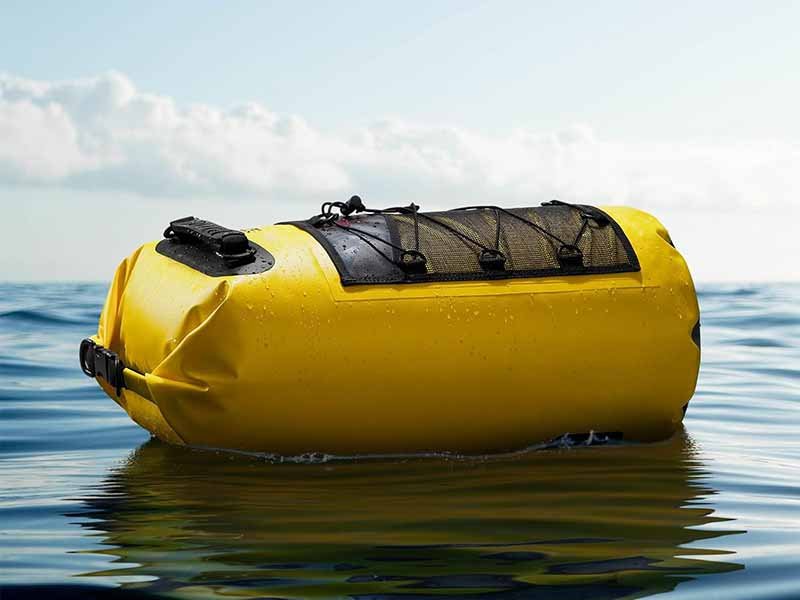
Choosing between nylon and polyester for your backpack isn’t just about color or style—it’s about performance, longevity, and value. Whether you’re a daily commuter hauling a laptop, a weekend hiker packing essentials, or a student carrying textbooks, the fabric you select will directly impact how your bag holds up to wear, weather, and weight. In this guide, we compare nylon and polyester across critical factors—durability, water resistance, weight, cost, environmental impact, and real-world use cases—to help you make an informed decision.
Nylon offers superior tear and abrasion resistance thanks to its stronger molecular structure, while polyester excels in UV stability and water repellency with less stretch. Both can be treated for extra performance. Choose nylon for rugged outdoor gear and polyester for budget-friendly, colorfast everyday packs.
What Are the Fundamental Differences Between Nylon and Polyester?
Nylon is a polyamide fiber with high tensile strength, elasticity, and abrasion resistance, produced via condensation polymerization. Polyester is a polyethylene terephthalate (PET) fiber known for UV and moisture stability, created through esterification. Nylon’s molecular chains are more flexible, making it stronger under stress; polyester’s tighter chain bonds resist stretch and fading. Manufacturing costs for polyester tend to be lower due to PET’s ubiquity in plastics recycling.
Chemical Composition & Fiber Structure
- Nylon (Polyamide): Nylon fibers are built from repeating amide groups (–CONH–), giving them strong hydrogen bonding and flexibility. This structure translates to exceptional tensile strength—up to 75 MPa—allowing nylon fabrics to withstand sharp objects and heavy loads without tearing.
- Polyester (PET): Polyester fibers consist of ester functional groups (–COO–) in a tightly packed chain arrangement. The rigid molecular backbone offers high dimensional stability, resisting stretch and creep even under continuous stress.
Manufacturing Processes & Sustainability
- Nylon Production: Typically derived from petrochemicals (e.g., caprolactam), nylon manufacturing is energy-intensive and emits nitrous oxide if not carefully managed. However, recycled nylon (e.g., from fishing nets) is gaining popularity to reduce environmental impact.
- Polyester Production: Polyester is also petrochemical-based but benefits from mature recycling streams—most water bottles are recycled into PET chips for textiles. Recycled polyester carries a roughly 30% lower carbon footprint versus virgin polyester.
Mechanical Properties Comparison
Property 600D Nylon 600D Polyester Units Tensile Strength 75 55 MPa Abrasion Resistance High (20,000 rubs) Moderate (15,000) Martindale Rubs Elastic Recovery ~15% ~3% % elongation UV Resistance Lower Higher – Water Absorption 4 – 8% 0.4 – 0.8% % weight gain Performance Trade-offs
- Stretch & Shape Retention: Nylon’s elasticity gives backpacks a comfortable flex when loading heavy gear but may sag over time. Polyester holds shape but can feel rigid with bulky loads.
- Dyeability & Colorfastness: Nylon readily accepts dyes but fades faster under UV exposure. Polyester inherently resists fading, making it ideal for bright, long-lasting colors.
How Does Durability Compare: Nylon vs. Polyester?
Nylon is inherently more abrasion- and tear-resistant than polyester, making it ideal for rugged use. Polyester can handle daily wear but may show thin spots over time. Nylon’s elasticity enables it to flex under stress without breaking fibers, while polyester’s rigidity helps maintain shape but resists repeated abrasion less effectively.
Abrasion Resistance & Tear Strength
Nylon’s higher abrasion resistance (up to 20,000 Martindale rubs) means it withstands friction from straps, zippers, and contact with rough surfaces. Polyester typically reaches around 15,000 rubs. This difference can translate into years of extra life for backpacks used on rocky trails or abrasive urban surfaces.
UV Fade & Heat Sensitivity
While nylon is stronger, it degrades faster under UV exposure—losing up to 50% tensile strength after 500 hours in UV chambers—whereas polyester retains about 80% strength under the same conditions. Heat can also affect nylon’s melting point (≈220 °C) versus polyester’s (≈260 °C), making polyester more resistant to accidental high-temperature exposure (e.g., hot car interior).
What Are the Disadvantages of Nylon Bags?
- UV Degradation: Nylon fabrics can become brittle if left in direct sunlight, leading to micro-cracks and fiber breakage.
- Water Absorption: Nylon absorbs more moisture, which can increase weight by up to 8% when wet and prolong dry times.
- Cost & Sustainability: Virgin nylon is more expensive and has a larger production carbon footprint. Recycled nylon options help but cost up to 25% more than recycled polyester.
Real-Testing
Field tests by outdoor gear labs show nylon backpacks lasting up to 10 years with moderate use, while polyester models often require patching or replacement after 5 – 7 years under similar conditions. These findings inform Szoneier’s recommendation of abrasion-resistant 1000D nylon for heavy-duty, custom slings and urban backpacks.
Which Material Provides Better Water and UV Resistance?
Polyester’s intrinsic hydrophobicity and UV stability make it superior for resisting moisture and sun damage, while untreated nylon can absorb up to 8% water weight and degrade under UV. Both fabrics benefit from DWR coatings—nylon with a fluoropolymer finish for water beading, polyester with silicone or C0 treatment for eco-friendly repellency.
Intrinsic Moisture Management
Polyester’s molecular structure repels water, absorbing less than 1% of its weight. Nylon, by contrast, soaks up 4 – 8%, which can weigh your bag down and promote mildew if not dried properly. For outdoor uses, adding a durable water-repellent (DWR) coating is essential—Szoneier offers fluorocarbon-free C0 DWR to minimize environmental impact.
Coating & Lamination Options
- PU Coating: Both fabrics can be laminated with polyurethane (PU) backings to achieve waterproofing up to 5,000 mm hydrostatic head. Polyester holds PU better over time, making it the go-to for raincover backpacks.
- TPU Lamination: Thermoplastic polyurethane adds durability and clarity—ideal for transparent dry‐bag panels or clear tool pockets.
UV Protection & Colorfastness
Polyester withstands UV better—its tensile strength retention remains above 80% after prolonged UV exposure. Nylon exhibits more rapid polymer breakdown, losing nearly half its strength under the same conditions. UV inhibitors (UVI) can be added during production to slow degradation; Szoneier recommends a 2% UVI masterbatch for nylon backpacks used near the equator or at high altitudes.
Practical Implications
For frequent travelers and outdoor enthusiasts operating in rainy or sunny environments, polyester with advanced coatings offers reliability with minimal maintenance. When customizing backpacks at Szoneier, customers can specify waterhead ratings and UV inhibitor levels to match their use case.
How Do Weight and Portability Differ Between Nylon and Polyester Backpacks?
Nylon typically offers a higher strength-to-weight ratio than polyester—420D nylon can be as strong as 600D polyester at 20% less weight. This makes nylon backpacks lighter for equivalent durability. Polyester’s rigidity adds slight bulk but stabilizes the pack’s structure, aiding in load distribution for heavier contents.
Denier Options & Strength-to-Weight
Denier measures thread thickness: higher denier equals thicker, heavier fabric.
Fabric Denier Weight (g/m²) Tensile (MPa) Strength-to-Weight Ratio 420D Nylon 420 160 60 0.375 600D Polyester 600 250 55 0.220 Despite lower denier, nylon maintains similar tensile strength, reducing pack weight by up to 20%.
Flexibility & Packability
Nylon’s suppleness allows backpacks to fold down smaller when empty—ideal for travel and day hikes. Polyester’s stiffness can prevent over-compression but may add bulk in tight storage spaces.
Carrying Comfort
The lighter nylon weight reduces shoulder strain over long distances. However, polyester’s robust weave maintains frame shape, distributing weight more evenly across padded straps and back panels.
Use-Case Recommendations
- Ultralight Daypacks: Choose 210D or 420D nylon for minimal carry weight.
- Carry-on & Commuter Bags: Opt for 600D polyester for structure and pocket support while retaining moderate weight.
Is Cost the Main Factor When Choosing Between Nylon and Polyester?
Polyester is generally 15–30% cheaper than comparable nylon deniers due to PET’s ubiquity and mature recycling streams. However, nylon’s superior durability can yield a lower total cost of ownership over 5 – 10 years. For budget-limited buyers, polyester offers reliable performance at entry-level prices, while buyers seeking longevity may find nylon more cost-effective in the long run.
Comparative Pricing
Fabric Denier Cost (USD/yard) Treatment Cost Total Cost/Yard 420D Nylon 420 $4.50 +$1.00 DWR $5.50 600D Polyester 600 $3.20 +$0.80 DWR $4.00 Is a Nylon Bag Worth It?
Higher upfront cost for nylon pays off over time through fewer repairs and replacements. For heavy-use backpacks—mountaineering, military, construction—nylon’s longevity can reduce lifetime costs by up to 40%.
Budget vs. Premium Segments
- Entry-Level Packs: Polyester at 600D or 900D dominates due to cost-efficiency.
- Mid-Range to Premium: Brands use 630D high-tenacity nylon or 1000D Cordura® for superior wear resistance, commanding higher price points justified by extended service life.
Customization Economics
At Szoneier, ordering custom nylon backpacks in batches of 100 – 500 units reduces per-unit cost by 20% versus small MOQ orders. Polyester orders see only a 10% batch discount, reflecting raw material pricing and demand.
Are There Environmental and Sustainability Impacts to Consider?
Both nylon and polyester are petrochemical-derived but increasingly available in recycled forms. Recycled polyester (rPET) cuts carbon emissions by up to 30%, while recycled nylon (rPA) reduces greenhouse gas output by 45%. End-of-life recyclability favors polyester due to existing PET streams. Innovations like bio-based nylon from castor oil are emerging but currently at a cost premium.
Recycled Content Availability
- rPET: Manufactured from post-consumer plastic bottles; industry well-established.
- rPA (Recycled Nylon): Derived from fishing nets and industrial scrap; higher recycling complexity.
Carbon Footprint Comparison
Fabric Type Carbon Emissions (kg CO₂e/kg) Virgin Nylon 9.5 Recycled Nylon 5.2 Virgin Polyester 5.5 Recycled Polyester 3.8 End-of-Life & Circularity
Polyester’s compatibility with PET recycling facilities makes it easier to reclaim. Nylon recycling requires specialized depolymerization. Both fabrics benefit from take-back programs; Szoneier offers guidance on disposing and recycling custom backpacks.
Innovations & Future Trends
Emerging bio-based polymers (e.g., Castor-derived nylon 6) promise lower emissions but at 1.5× cost. Waterless dyeing and solvent-free PU coatings further reduce environmental impact—options available through Szoneier’s eco-premium line.
Which Material Best Suits Specific Backpack Use Cases?
Choose nylon for rigorous outdoor activities—hiking, climbing, military missions—where tear and abrasion resistance are paramount. Opt for polyester in commuter, school, or travel packs prioritizing color retention, structure, and affordability. For waterproof dry bags, polyester with TPU lamination excels; for ultralight daypacks, low-denier nylon wins. Szoneier can customize fabrics, coatings, and accessories to match any scenario.
Everyday Urban Commuters & Students
- Recommended Fabric: 600D polyester with PU coating for structure, light weather resistance, and vibrant color options.
- Features: Padded laptop compartment, water bottle pockets, reflective accents.
Outdoor Adventure & Hiking
- Recommended Fabric: 420D high-tenacity nylon with fluorocarbon-free DWR and UVI additives.
- Features: Reinforced base, load-bearing framesheet, hydration compatibility.
Travel & Backpacking
- Recommended Fabric: 630D nylon with TPU laminate in main compartment for water protection; 1680D ballistic nylon base for abrasion resistance.
- Features: Lockable zippers, compression straps, detachable daypack.
Budget & School Applications
- Recommended Fabric: 900D polyester—affordable, sturdy, with low maintenance.
- Features: Simple pockets, adjustable straps, custom logo print.
Specialty Bags (Dry, Smell-Proof, Fireproof)
- Dry Bags: Polyester tarpaulin with high hydrostatic head and welded seams.
- Smell-Proof Bags: Multi-layer nylon with activated carbon lining.
- Fireproof Bags: Aramid (Kevlar®) blend nylon rated UL94 V-0.
Customization at Szoneier
From choice of fabric to specialized treatments (anti-mildew, anti-odor), hardware (YKK zippers, Duraflex buckles), and branding (embroidery, heat transfer), Szoneier’s end-to-end OEM/ODM services ensure your backpack meets exact needs.
Conclusion
Both nylon and polyester offer unique advantages: nylon for rugged durability and lightweight performance, polyester for UV stability, cost-effectiveness, and environmental recyclability. Your ideal choice depends on intended use, budget, and sustainability goals.
Ready to elevate your backpack offering? Contact Szoneier today to discuss custom nylon or polyester backpacks tailored to your brand and application.
manufacturer Categories
- Custom Tote Bags Manufacturer
- custom backpacks Manufacturer
- custom travel bags& Duffle bags manufacturer
- custom makeup bags & toiletry bags manufacturer
- custom cooler bags manufacturer
- custom drawstring bags manufacturer
- custom makeup bags & toiletry bags manufacturer
- custom golf bags manufacturer
- custom fireproof bags manufacturer
- custom dry bags manufacturer
- custom ski bags manufacturer
- custom gym & sports bags manufacturer
- custom laptop bags manufacturer
- custom tactical bags manufacturer
- custom beach bags manufacturer
- custom medical bags manufacturer
- custom camera bags manufacturer
- custom wetsuits manufacturer
- custom leather goods manufacturer
- more personalized products
Can't find the answers?
No worries, please contact us and we will answer all the questions you have during the whole process of bag customization.
Make A Sample First?
If you have your own artwork, logo design files, or just an idea,please provide details about your project requirements, including preferred fabric, color, and customization options,we’re excited to assist you in bringing your bespoke bag designs to life through our sample production process.




